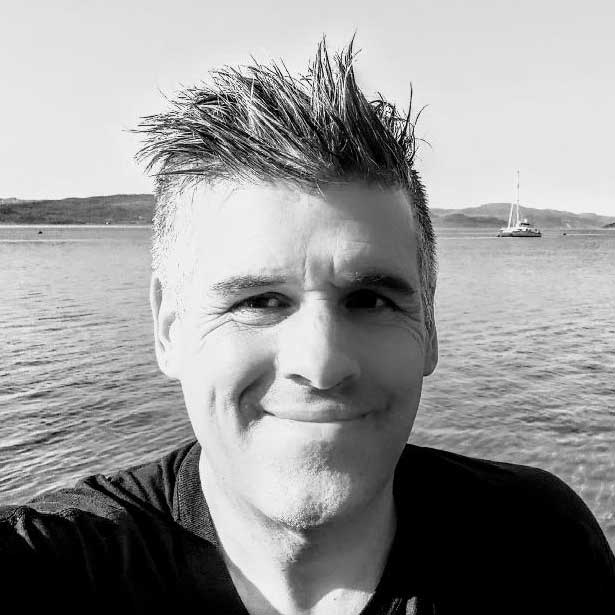The Mission rose from the mid-80s UK goth scene to become crossover stars thanks to hits such as Wasteland and Deliverance – and their success was matched by the appetite for hedonism. In 2011, older-but-wiser band members Wayne Hussey, Simon Hinkler and Craig Adams looked back on their rollercoaster glory years.
“We set out with the intention of having a good time,” says Wayne Hussey in a rare moment of understatement. His band The Mission are still notorious for that good time, which lasted a solid seven or eight years and was followed by a decade-long hangover.
In the late 1980s The Mission came to exemplify an epic debauchery not seen in British rock since the 1970s excesses of the Faces, the Stones and Led Zeppelin. From their blind-drunk gigs to their speed-fuelled all-nighters, The Mission slurped and snorted and shagged their way across the world, stumbling off festival stages from Leeds to LA. Heroically, hilariously out of step with the wholesome climate of post-Live Aid pop, Hussey’s gang of shaggy-maned marauders wanted to get loaded and have a good time. And that’s what they did. Night after night after night.
But behind their Hammer Of The Goths caricature, The Mission also recorded some of the most cinematic, melodramatic, roaringly romantic guitar anthems of their era. Defying the sneers of rock critics and rival musicians, they wrote their own chapter in the overlooked, underrated, alternative pop history books. They also shared a stage with Robert Plant and U2, sold more than four million albums and came close to cracking America – though, in fairness, America came closer to cracking them.
Hussey’s steely self-belief has plainly mellowed with marriage and middle age. But, talking to his fellow Mission survivors, it’s clear that the combustible chemistry of their 1980 heyday still simmers just below the surface.
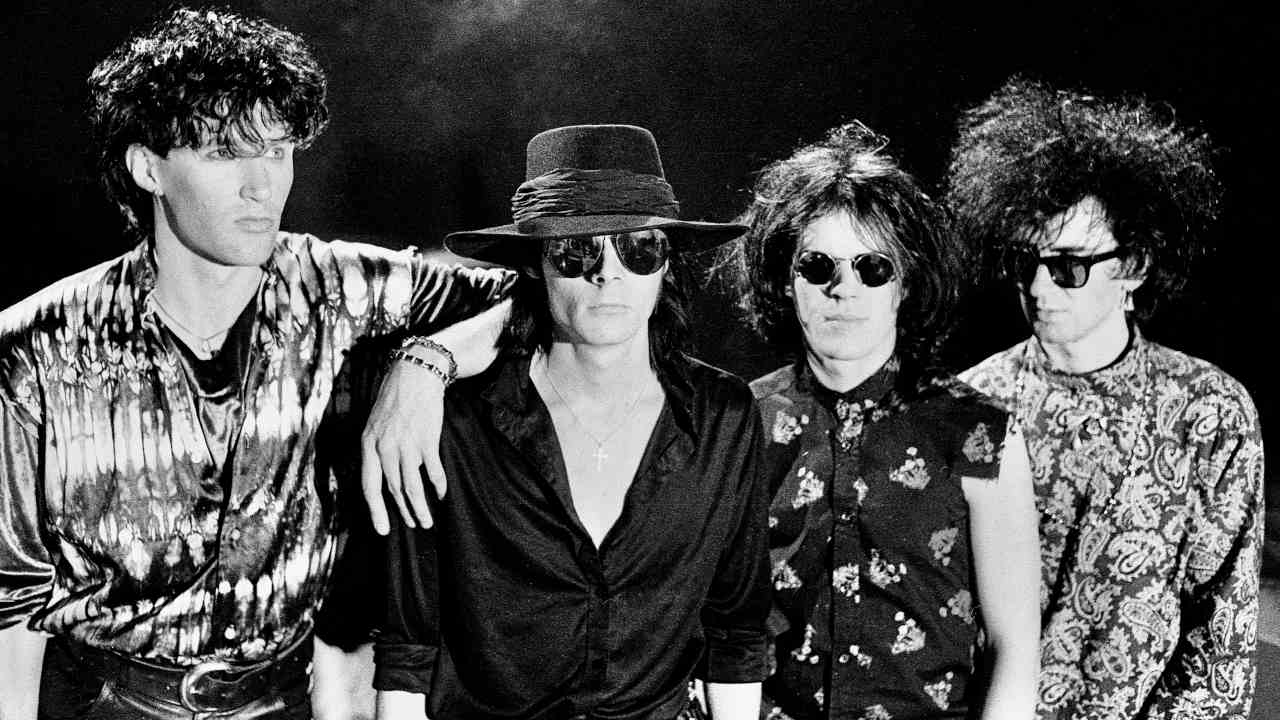
Wayne Hussey grew up in a devoutly Mormon family in Winterbourne, a sleepy commuter village north of Bristol, which also happens to be the childhood home of Harry Potter creator JK Rowling. It was, he recalls, “quite provincial, quite conservative”.
In his teens, after years of anguished soul-searching, Hussey ditched parental plans for him to become a Mormon missionary. Instead he boarded the Hogwarts Express to rock’n’roll excess. “It sounds terribly conceited, but I always knew I’d make a success to some degree in music,” he says. “I always felt that, from the time I started writing songs.”
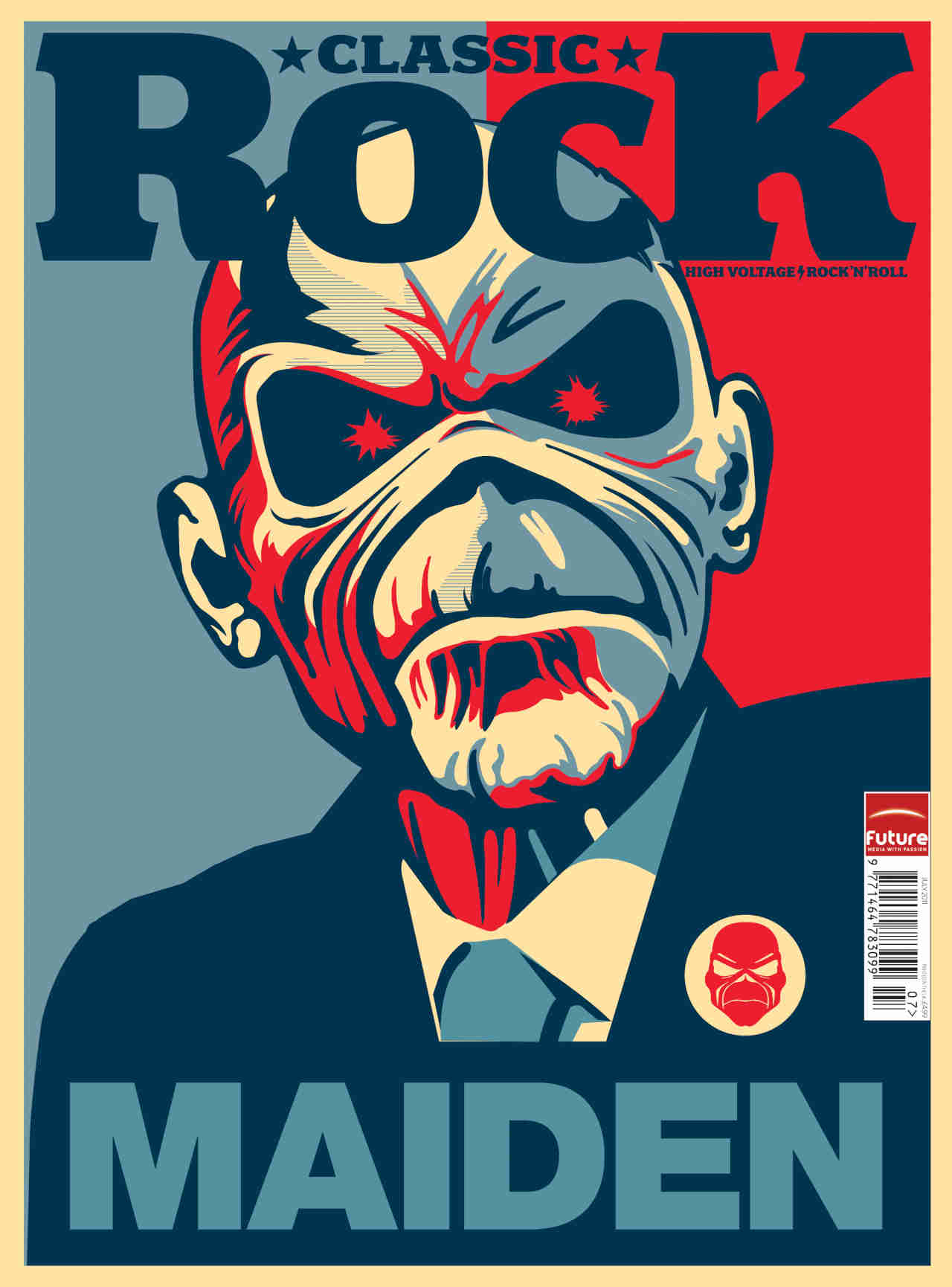
At 18 Hussey relocated to Liverpool. Immersing himself in the post-punk scene around the fabled Eric’s club – launch pad for local heroes like Echo And The Bunnymen and the Teardrop Explodes – he was soon playing guitar for the legendary Merseyside motormouth Pete Burns in a prototype version of Dead Or Alive.
But the hungry, ambitious, speedfreak Hussey soon became frustrated with Dead Or Alive’s sluggish work rate. After introducing Burns to sequencers and synthesisers, he effectively made himself redundant. “It was great being in that band. We were definitely a gang,” he recalls. “There wasn’t any problem between me and Pete. I was probably a pain in the ass to work with.”
The next step in Hussey’s Mormon conquest involved moving to Leeds in 1984 following an invitation to join Andrew Eldritch’s goth overlords The Sisters Of Mercy. It was here that he met future Mission bassist Craig Adams, and the two of them became thick as thieves. “We always pretty much got on like a house on fire,” Adams remembers. “We were the two little evil children in The Sisters, and when The Mission happened it was like that as well.”
Hussey lasted 18 months in The Sisters, co-writing and playing on the band’s landmark 1985 debut, First And Last And Always. “I loved making that album,” he says. “I put my heart and soul into that.”
But Eldritch’s aloof, autocratic leadership inevitably led to mutiny among his headstrong, hedonistic underlings. In late 1985, Hussey and Adams quit to form their own breakaway group, cheekily christened The Sisterhood. Eldritch was livid, threatening legal action and even releasing a spoiler mini-album. The Sisters frontman continued bitterly slagging his former bandmates in interviews for years afterwards.
Meanwhile, as they mulled over alternative band names, Hussey and Adams held auditions in Leeds. They brought in drummer Mick Brown from local John Peel favourites Red Lorry Yellow Lorry, and Sheffield-born guitarist Simon Hinkler, formerly Jarvis Cocker’s sideman in an early incarnation of Pulp.
In early 1986 The Sisterhood embarked on a riotous European tour supporting their friends The Cult. But, in a portent of stormy times ahead, Hussey briefly sacked Hinkler before the tour even began. “To this day I don’t know what the big deal was,” the guitarist says. “I think I was made the scapegoat for a set of other problems that had little or nothing to do with me.”
Back in Britain, The Sisterhood became The Mission – named partly after Hussey’s hi-fi speakers, and also after a Mormon missionary diary given to the singer by his ever-hopeful parents. Early success in the indie charts with their first two singles (later collected with B-sides as The First Chapter) and a strong live reputation soon helped the band secure a million-pound, seven-album deal with the Phonogram label. Barely six months old, the band were speeding towards fast-track success.
The seeds of The Mission’s ready-made fan base lay partly in the goth scene, which at the time had its epicentre in Leeds. The band’s Sisters connections and stormy, sensual sound earned them an almost instant groundswell of black-clad disciples, who dubbed themselves Eskimos or Missionaries.
“It wasn’t so much that we were part of a movement,” Hussey argues, “just that we found like-minded souls who were into the same kind of music, literature, films, lifestyle and clothes.”
But the ‘goth’ label also earned The Mission knee-jerk hostility from the more indie-centric London music papers, who consistently mocked Hussey’s poetic pretensions and bombastic mannerisms. In Britain, at least, the band remained press punchbags for much of their career.
“They just didn’t get our sense of humour,” Adams argues. “We were laughing all the way through The Sisters, and through The Mission too.”
However, Hussey will concede that “there were definitely times when we were pompous, self-important and humourless. But on the other side of the coin, there were times when we were very playful and tongue in cheek.”

In August 1986, rolling into Ridge Farm Studios in Surrey to make their debut album, the Mission were a well-oiled touring machine. Rather too well-oiled, at times: God’s Own Medicine was recorded and mixed in five weeks flat on a heady cocktail of alcohol, amphetamine and ambition. Spawning the anthemic hit single Wasteland, the album roared to No.14 in the UK in November.
God’s Own Medicine (the title a nod to a slang term for morphine) was produced by Tim Palmer, a friend from Hussey’s Dead Or Alive days. The first morning after his arrival, Palmer woke to find the band still awake and speeding from the night before. The producer admits his job meant “turning a blind eye to an abundance of drink and drugs”, but at the same time The Mission proved disciplined and determined. “Even though they could drink, this band worked really hard and put in long hours.”
If they were excessive in the studio, The Mission became total rock pigs on the road. Early on, Hussey perfected the noble ancient Roman art of self-induced vomiting, leveraging his booze binges into an Olympic-level sport. Meanwhile, Adams developed a reputation for pissing where he stood, often mid-conversation in crowded bars.
“A lot of people were going: ‘You can’t do this!’” Adams says. “Then all of a sudden Guns N’ Roses came along and everybody said how fantastic it was. We got in a bit of trouble for that but, hey, we were ahead of our time, man.”
Hussey recalls a memorable after-show party where a promoter carved out the band’s name in cocaine on a silver tray. “I made sure I had the ‘M’,” he says proudly. On another occasion he and Hinkler were almost scalped by Hells Angels for drunkenly simulating gay sex in a biker bar. “Mick saved our lives that night,” the singer laughs. “We were all tripping a bit.”
Groupies, hookers and sleazy sexual antics also became regular fixtures on The Mission’s schedule. Early on, Hussey was banned from the Leeds Warehouse for shagging in the toilets. “I got stitched up by an ex-girlfriend who worked behind the bar there,” he says. “She saw me go in with this other girl and got a bit pissed off, so she got the manager.”
Impressively, the entire group were later banned from London’s most rock-friendly hotel, the infamous Columbia in Bayswater. “I can’t remember why,” Hussey muses. “It might be something to do with the fact that one night, me and this girl decided to get out on the balcony and go around on the ledges knocking on people’s windows. A crazy thing to do. We could easily have fallen to our deaths.”
The debauchery intensified when The Mission went on their first US tour, in April 1987, boldly embracing a U2-sized schedule of 40 dates in 10 weeks. The band’s live agent, Ian Copeland, a US army veteran and brother of Police drummer Stewart, later described this orgiastic joyride through the altered states of America as more extreme than anything he’d witnessed in Vietnam.
“America is the land of candy compared to Europe,” Hussey explains. “All of that stuff was easily attainable, so of course we went for it. Yes it was a crazy tour, a lot of drugs, a lot of craziness. A large part of being in a band is you can get away with bloody murder when you’re on tour. You have a licence to be a total dick.”
Inevitably there were casualties. Trouble finally came knocking in LA on May 15. After a long overnight drive, the sleep-deprived, chemically addled Brits were reluctantly pressed-ganged into performing a bleary-eyed lunchtime show for the powerful radio station K-ROQ.
“We were cranked up on bourbon by midday,” Hinkler recalls. “Just before stage time, Craig and me ran on to the stage in our underpants, screaming at the audience. I think the gig might have been absolutely brilliant, but events that followed served to cloud the memory.”
These events involved the inebriated, disorientated Adams wandering out on to Sunset Strip, where he somehow ended up underneath an LAPD patrol car. Yanked out and handcuffed, he was saved from arrest thanks to some sweet-talking diplomacy by the band’s manager, Tony Perrin. Witnesses later likened the rabid, ranting Adams to a “wild animal”.
“As far as I’m concerned the police car hit me and knocked me over,” the bassist recalls today. “I couldn’t get up once the car was on me, so he pulled me out by the hair. It was probably from not sleeping, and doing a lunchtime show, and just being a bit out of control. I had to go home and have a rest.”
Adams flew home to Europe to recuperate from his Hollywood meltdown. For the remainder of the US dates The Mission brought in a stand-in guitarist and finished the tour.
“It probably sobered us up for a few weeks,” Hussey recalls.
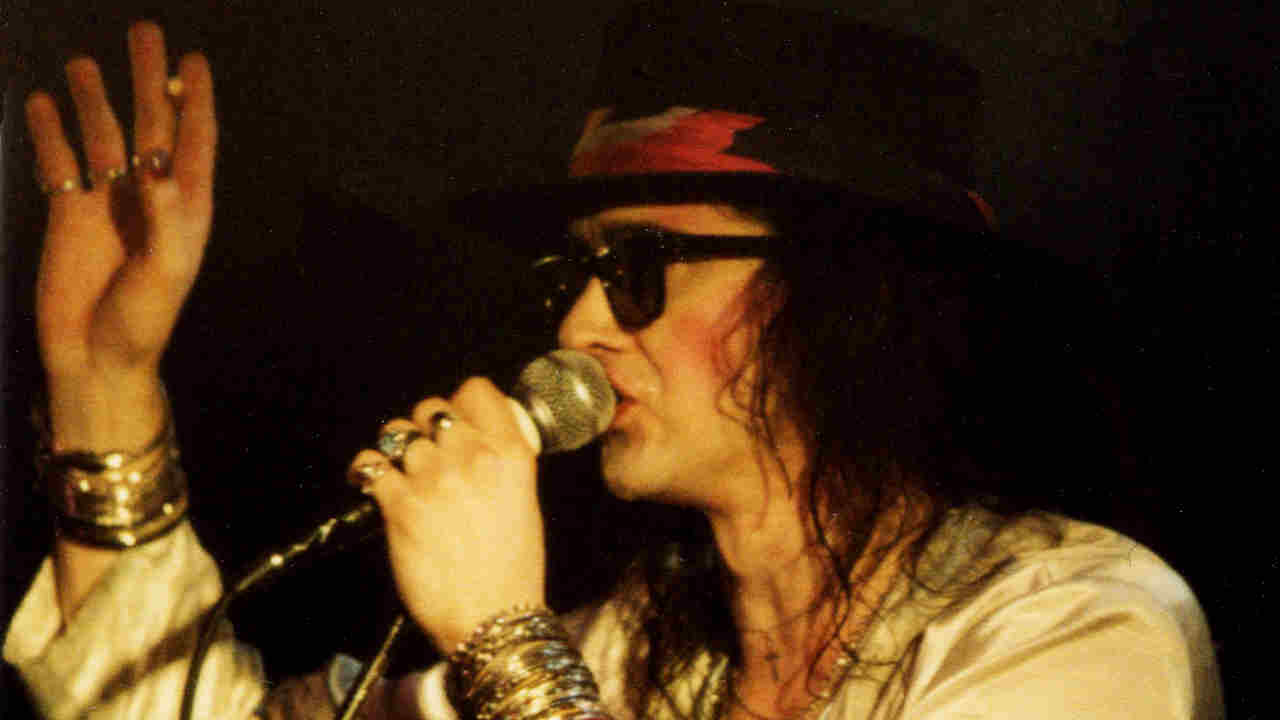
The Mission had taken a knock, but they were reinvigorated when U2 offered them support slots on two upcoming dates of their Joshua Tree stadium tour. The first was at Elland Road in Leeds, The Mission’s home town, on July 1. “That felt like a vindication,” Hussey says. “The big league. Something to aspire to.”
The next step on Hussey’s stairway to stadium-rock heaven was inviting former Led Zeppelin bass player John Paul Jones to the Elland Road show in a bid to persuade him to agree to produce the second Mission album, Children. A chastened Adams rejoined the band for these shows, which, ironically, degenerated into another drunken shambles. All the same, Jones liked what he heard enough to agree to work with them.
In August, band and producer convened at The Manor Studio in Oxfordshire to begin the marathon sessions that resulted in Children.
“JP did us a great service by getting us all to chill the fuck out,” says Hinkler. “We jokingly called him The Gothfather.”
Brooding and thunderous, Children hit No.2 in the UK album chart in February 1988, boosted by its soaring, U2-ish lead-off single, Tower Of Strength. The album transformed The Mission into arena-rocking, festival-headlining heavyweights, although Hussey later went cold on its boomy sound. “We were aiming for the stars, and we only ended up at the Moon,” he sighs.
In true Zeppelin tradition, the singer had written most of Children while on retreat in the Welsh mountains, even naming one of the tracks Black Mountain Mist. On their subsequent US tour The Mission supported Robert Plant, who praised them for capturing the “spirit” of Zeppelin rather than mimicking them. “I think he meant we were as debauched as they were,” laughs Hussey.
That said, The Mission firmly deny ever aspiring to be a Zeppelin for the 1980s. “That got mentioned a lot because the book Hammer Of The Gods had come out, and we were all reading that,” Adams explains. “There were just funny little connections that I don’t think were intentional. We weren’t trying to copy them.”
After a long break between mega-tours, The Mission regrouped in late 1989 to record their third album, Carved In Sand. Dissatisfied with the heavy sound of Children, Hussey returned to producer Tim Palmer and Ridge Farm Studio. Released in February 1990, the album became the band’s biggest seller. It also ended up being their final Top 10 entry. In October it was expanded to include an additional disc of tracks from the same sessions, Grains Of Sand.
Hussey remembers the Carved In Sand sessions as sunny and acid-fuelled, but tensions were building below the surface. Cocaine had now become a staple of the singer’s diet. He recalls one night hoovering up an entire gram in one snort. It is no coincidence that the Mission’s first live album was titled No Snow, No Show For The Eskimo.
“Around the Carved In Sand period we started to earn some proper money, so that’s when our drugs of choice tended to differ,” Hussey explains. “Whilst I was doing cocaine, Simon would be smoking spliff, so we would be in totally different head spaces. That became a problem.”
Tim Palmer certainly noticed that Hinkler was “quieter than usual”, and increasingly marginalised in the studio. “By this time I’d learned not to upset the apple cart,” the guitarist recalls. “I tried not to get embroiled with the usual head-bashing about production ideas, which had driven me mad with the previous albums.”
“In hindsight, if I’d been a little bit more sensitive to what was going on at the time I would probably have seen Simon was struggling,” Hussey confesses. “I think I encouraged collaboration and contributions from other musicians, but maybe I did fall prey to the ‘singer’s disease’ at times.”
Tensions boiled over in Montreal on April 20, the first night of the Mission’s North American tour. Following a fractious show and a furious argument, Hinkler dramatically quit the band, leaving just a brief goodbye note.
“He just left in the middle of night, because we wouldn’t let his mate come on the bus,” Adams laughs. “There were obviously other issues, but that was the final straw that broke the camel’s back.”
The Mission soldiered on with stand-in guitarists. But Hinkler’s departure was a serious wrench which he later came to regret. All the band now struggle to pinpoint his exact motive for leaving. Even the guitarist himself, who recalls feeling “really burned out” after a bout of scarlet fever.
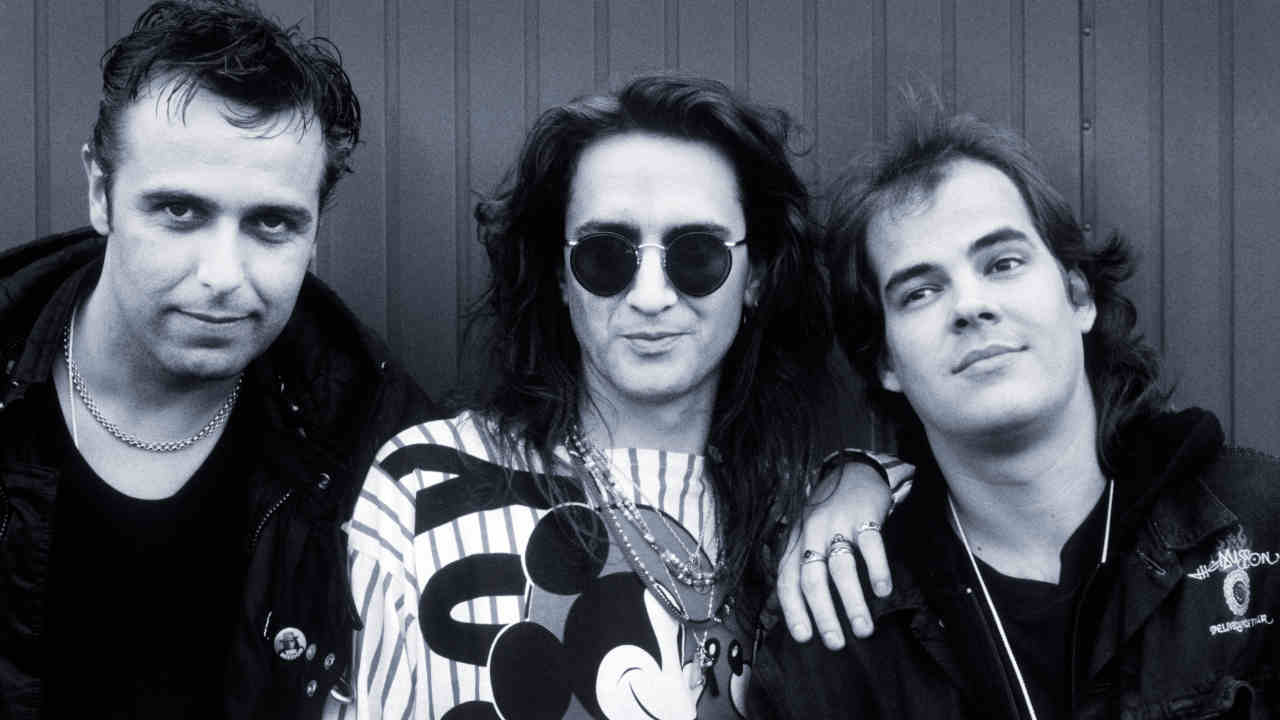
“I had been planning on leaving the band amicably at a convenient time for them anyway,” Hinkler says. “But in the end it only took a stupid spark of a stupid argument I didn’t ask for, and I just said, ‘Fuck this’.”
Losing Hinkler shattered The Mission’s classic line-up, and signalled the start of their commercial decline. At the close of their mammoth Carved In Sand tour, which grossed over a million pounds, Hussey discovered the group were £50,000 in debt. Though tempted to disband immediately, he made a businesslike decision to carry on and settle his financial obligations.
A more folk-leaning Mission album, Masque, released in 1992, earned lukewarm sales just as grunge went global. “We were a band in retreat,” Hussey admits. “With hindsight, Masque could have been a solo record, because in the canon of The Mission it’s an oddity. It certainly polarised our audience.”
A disenchanted Adams quit The Mission soon after Masque. Hussey then assembled a new line-up for two more albums: Neverland and Blue. Both were poorly received. In 1996 he quietly dissolved the band, and moved to LA with his Californian wife and daughter.
Over the past 15 years both Adams and Hinkler have recorded solo albums and played with a variety of re-formed bands, including Spear Of Destiny, the Cult and the Alarm. Meanwhile, Hussey has dabbled in sporadic Mission reunion tours and released two more indifferent albums. He finally resolved to close the book forever with a well-received run of farewell shows in London in 2008. End of story.
Or so he believed. After spending the last six years in Brazil’s rural hinterlands with his second wife, a Brazilian actress, Hussey is now a clean-living 52-year-old family man who earns his living mostly from low-key solo shows. But the temptation to re-form The Mission’s classic line-up for a 25th anniversary blow-out inevitably proved too great. In October he will share a London stage with Adams and Hinkler for the first time in two decades. Mick Brown was also invited, but had to decline for health reasons.
“With the 2008 shows, I said that was the end,” Hussey admits. “Three years later I’ve been proven to be a liar – not for the first time. There’s nothing wrong with that. As long as we’re not threatening to make a new album we’ll be alright. I’m under no illusions. People want to hear Tower Of Strength and Wasteland, and that is what they’ll get.”
With hindsight, Hussey admits that too much druggy, boozy indulgence ultimately hastened The Mission’s downfall. But, whatever their combustible chemistry, he remains proud of the legacy they left behind.
“Absolutely,” Hussey affirms. “There is nothing I regret. We achieved a whole lot more than I thought we ever would. We lasted a lot longer than anybody thought, and in the process made some pretty damn good music too.
“We’re very fortunate that we’ve all reached 50 and come through it pretty unscathed. Considering some of the craziness that went on, we’re all very lucky.”
Originally published in Classic Rock 159, May 2011

